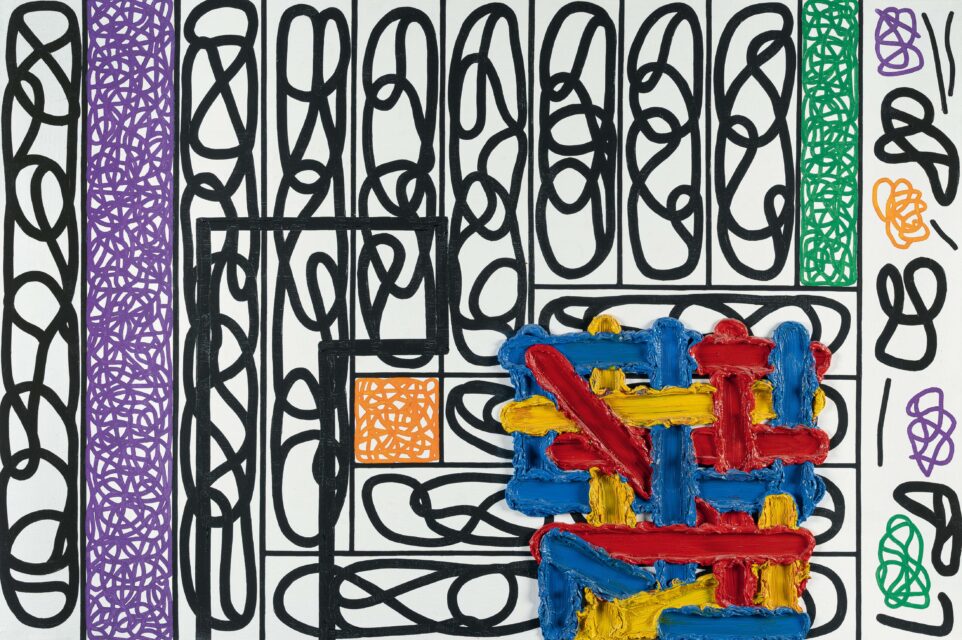“Margin for Error”
Details
Provenance:
Galerie Thomas Schulte, Berlin;
Private collection, North Rhine-Westphalia, acquired from the aforementioned in 2009.
Description
– The expressive juxtaposition of linear and colour elements gives “Margin for error” its energy.
– Lasker is one of the most important contemporary US-American painters who has been exploring the possibilities of abstract painting for many years.
– His work has been shown in major retrospectives at the Stedelijk Museum, Amsterdam, Museo Nacional Centro de Arte Reina Sofía, Madrid, and the Kunstsammlung NRW, Düsseldorf, among others; comparable works can be found at MUDAM, Luxembourg, the Hirshhorn Museum, Washington D.C., the Moderna Museet, Stockholm, the Museum Ludwig, Cologne, and the Whitney Museum of American Art, New York
The US artist Jonathan Lasker lives and works in New York City. Inspired by artists such as Piet Mondrian or Jackson Pollock, Lasker belongs to a group of artists who, after the successes of minimalism and conceptual art, have been exploring the possibilities of painting anew since the end of the 1970s.
Central to his work is the question of the relationship between figure and ground and the significance of line and colour. Lasker prepares his works in countless sketches, from which small oil studies emerge that are then transferred to the large format. His pictorial language is thus only apparently spontaneous, in reality well-considered, and it consists primarily of patterns, clusters of lines and grids of colour.
These gestural elements are – as here – integrated into firmly circumscribed structures, which – it seems – are not so much part of a unified pictorial structure, but stand side by side. Sometimes denser, sometimes looser, sometimes ordered, then again chaotic, they are reminiscent of cipher-like signs that give rise to a kind of visual language and at the same time a complex spatial situation.
Particularly striking – and typical of many of his works – is the impasto colour grid in the primary colours blue – red – yellow, which stands out powerfully from the canvas like a relief. These colour grids have a special meaning for Lasker; he uses them to “draw (the viewer’s) attention to colour and its physical properties. Colour has the specific capacity to become a site for the experience of the real, the concrete, as opposed to the represented, the imagined.” (Jonathan Lasker: Complete Essays 1984-1998, New York/Paris/Turin 1998, p. 19).
* All results incl. buyer’s premium (27%) without VAT. No guarantee, subject to error.
** All post-auction prices excl. buyer's premium and VAT. No guarantee, subject to error.
*** Conditional Sale: The bid was accepted below the limit. Acquisition of the work may still be possible in our post-auction sale.
R = regular taxation
N = differential taxation on works of art which originate from a country outside of the EU
The private or commercial use of images shown on this Website, in particular through duplication or dissemination, is not permitted. All rights reserved.


